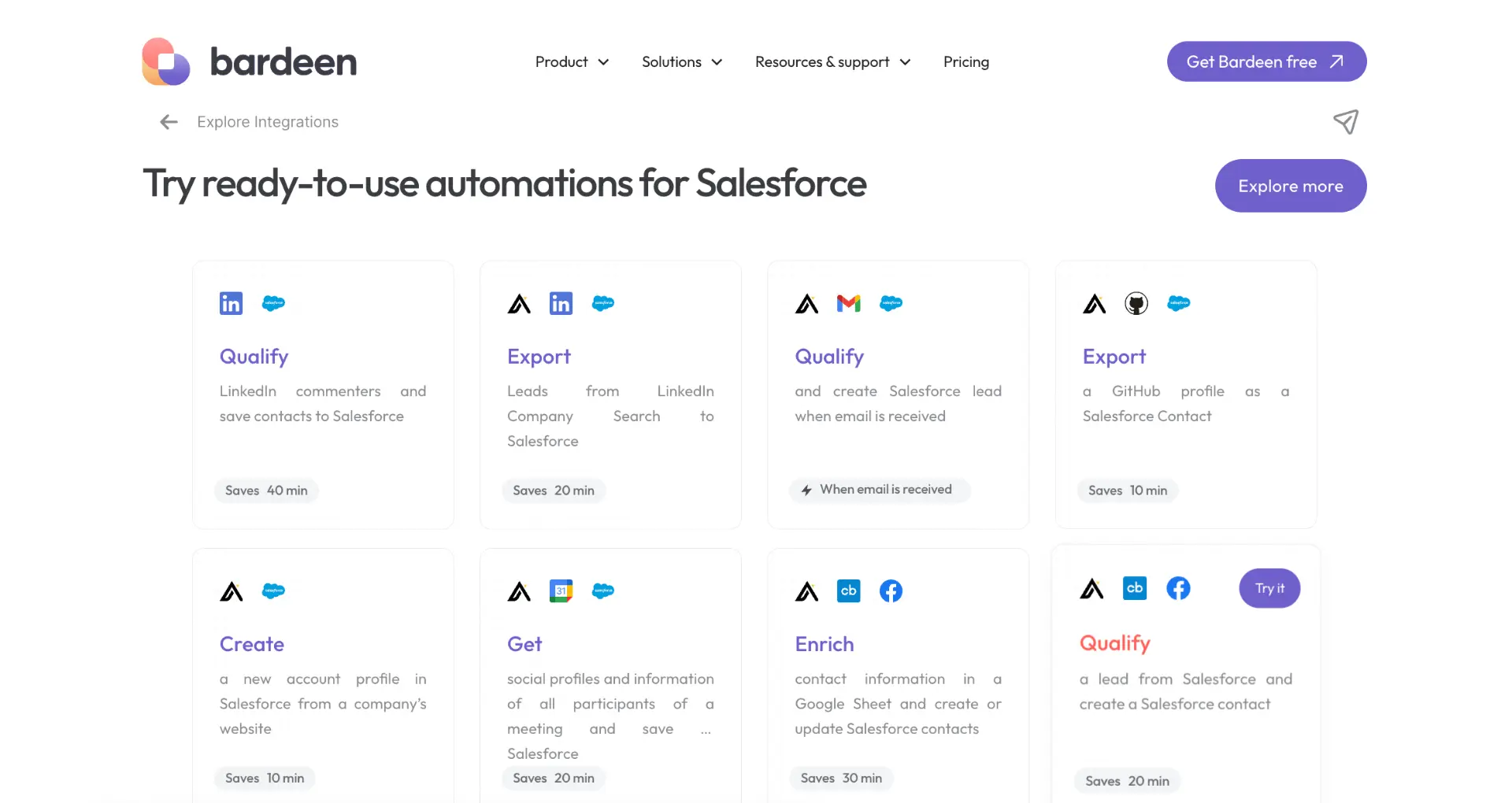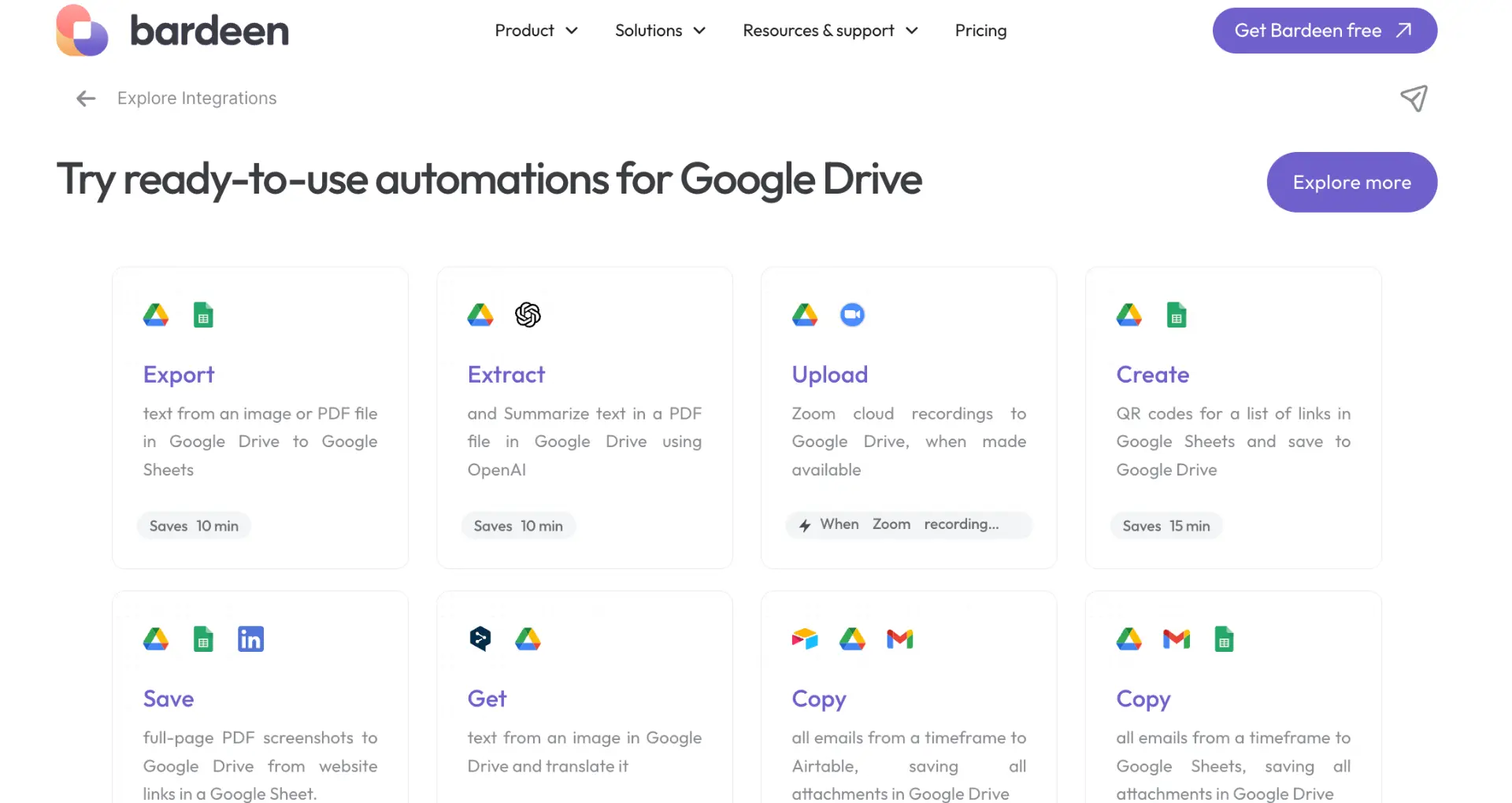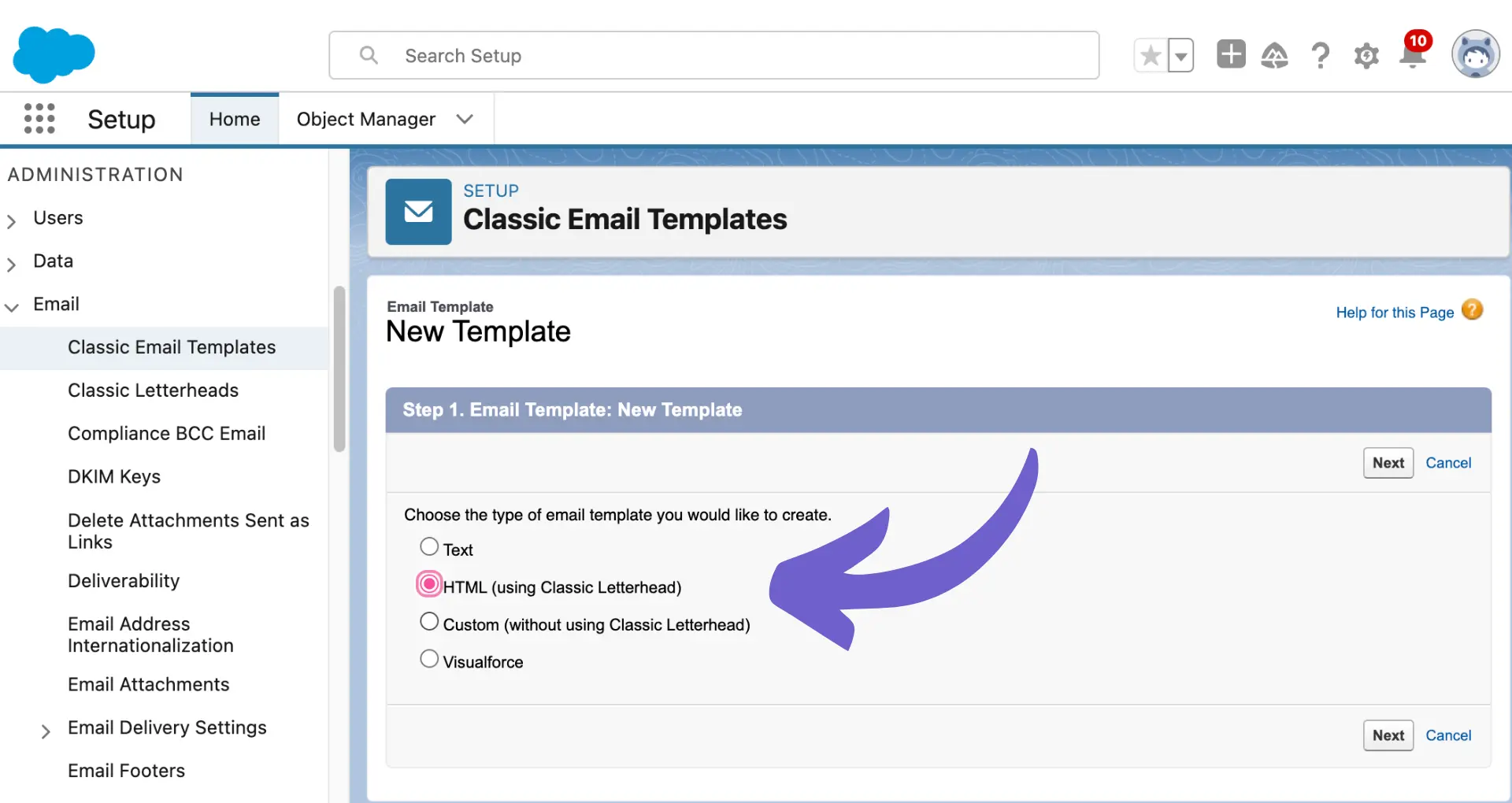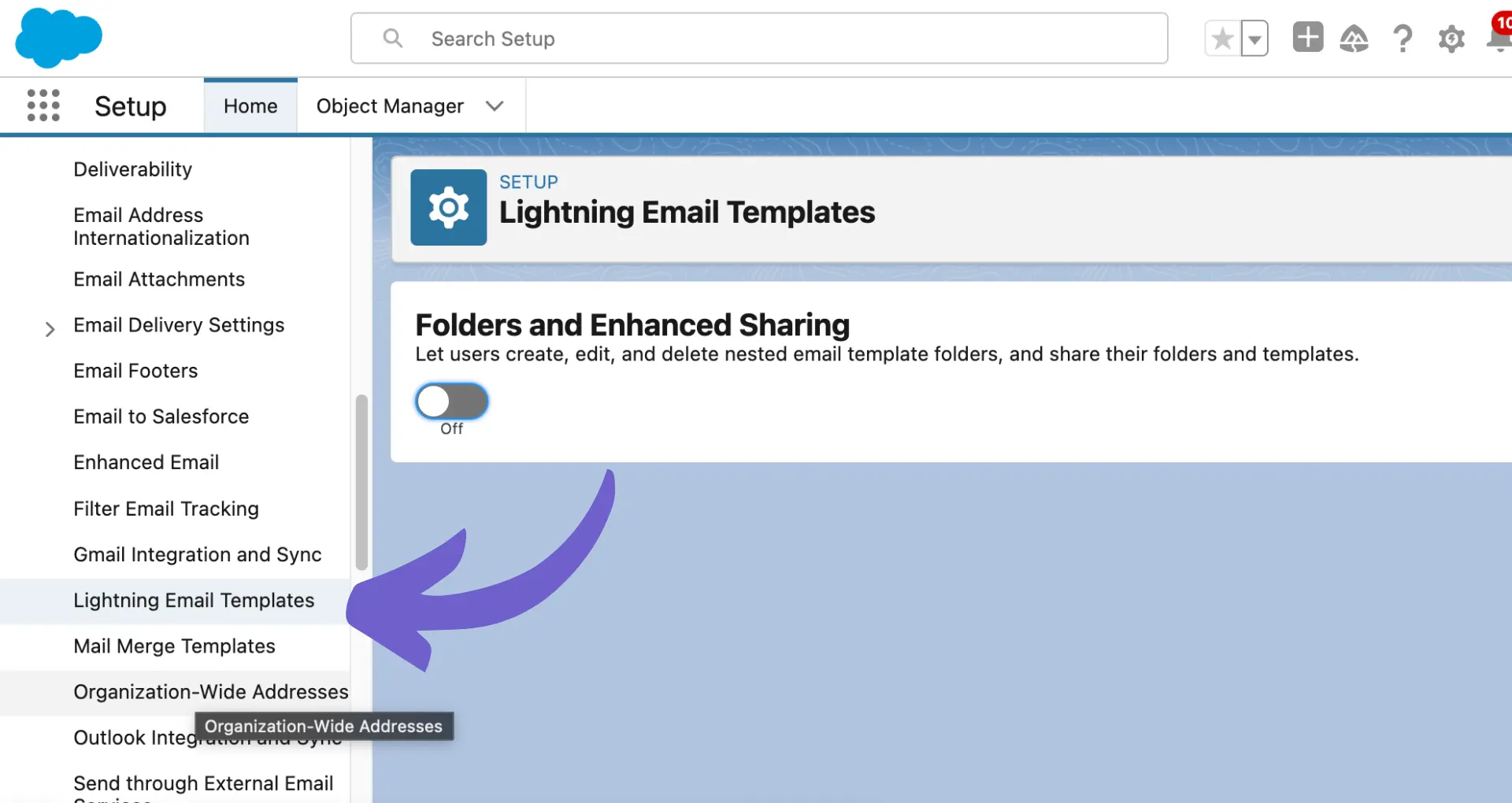Upload your image, copy the URL, and use the <img> tag.
By the way, we're Bardeen, we build a free AI Agent for doing repetitive tasks.
Since you're working with Salesforce, you might find our AI for sales helpful. It automates email creation, saving you time and effort.
Adding images to your Salesforce email templates can significantly enhance their visual appeal and engagement. However, the process of inserting images into Salesforce email templates requires a few specific steps to ensure proper display and deliverability. In this step-by-step guide, we'll walk you through the process of preparing, hosting, and inserting images into both Salesforce Classic and Lightning email templates, as well as share best practices for effective image use in email communication. Streamline your Salesforce email creation process with Bardeen, a no-code workflow automation platform that saves you time by turning repetitive tasks into a single click.

Preparing and Hosting Images for Salesforce Email Templates
Selecting high-quality images that align with your brand's message is crucial when creating engaging Salesforce email templates. To ensure your images load quickly while maintaining visual quality, follow these steps:
- Choose relevant, high-resolution images that resonate with your audience and brand.
- Optimize images by compressing them without significant loss of quality. Tools like TinyPNG or Adobe Photoshop can help.
- Host your optimized images on a reliable platform like Google Drive or Amazon S3. Salesforce email templates require images to be hosted with a URL.

When hosting images on Google Drive, consider automating the process with Bardeen to save time and ensure consistency. This no-code workflow platform allows you to generate images from an email brief and automatically save them to Google Drive with just one click.
By carefully selecting, optimizing, and hosting your images, you'll be well-prepared to create visually appealing and engaging Salesforce email templates that effectively communicate your message and brand.
Inserting Images into Salesforce Classic Email Templates
To insert images into your Salesforce Classic email templates, follow these steps:
- Upload your optimized image to a reliable hosting platform like Google Drive or Amazon S3.
- Copy the absolute URL of the hosted image.
- In your Salesforce Classic email template, use the HTML
<img>tag to insert the image, like this:<img src="https://yourimageurl.com/image.jpg" alt="Descriptive alt text"> - Replace
https://yourimageurl.com/image.jpgwith the absolute URL of your hosted image. - Add meaningful alternative text within the
altattribute to describe the image. This improves accessibility and email deliverability.

Consider automating your email creation process by using Bardeen's playbook to create draft emails for Salesforce contacts using OpenAI. This can save time and ensure consistent image placement across your email templates.
Remember to always use absolute URLs for your image sources to ensure they display correctly across various email clients. By following these steps and best practices, you'll be able to effectively insert images into your Salesforce Classic email templates and create engaging, visually appealing emails.
Utilizing Images in Salesforce Lightning Email Templates
Adding images to Salesforce Lightning email templates is a more user-friendly process compared to Salesforce Classic. The Lightning Experience offers a drag-and-drop feature that simplifies image insertion, making it easier for users to create visually appealing emails.

To add an image to your Lightning email template, simply drag the image from your computer and drop it into the email template editor. Alternatively, you can click the "Image" button in the editor toolbar and upload your image file.
When using images in Salesforce Lightning email templates, keep these considerations in mind:
- Ensure that your images are compatible with the Lightning Experience and optimized for email.
- Test your email templates on various devices to ensure mobile responsiveness and proper image display.
- Use Bardeen's automation playbook to streamline your workflow by creating new Salesforce leads when specific labels are added to emails.
By leveraging the user-friendly features of Salesforce Lightning and following best practices for image use, you can create engaging and effective email templates that drive results.
Best Practices for Image Use in Email Communication
Images can be a powerful tool for boosting engagement and click-through rates in email marketing. Here are some guidelines for effectively using images in your email communications:
- Select images that are relevant to your message and resonate with your target audience.
- Optimize image size for faster loading times while maintaining quality. Aim for files under 1MB.
- Place images strategically within the email layout to draw attention to key content and calls-to-action.
- Automate image creation from email briefs to streamline your workflow and ensure brand consistency.
It's crucial to test your email templates across various devices and email clients to ensure images display properly. Integrating with your email service provider can help you monitor performance and make data-driven optimizations.
By following these best practices and leveraging automation tools, you can effectively incorporate images into your email marketing strategy to drive engagement and conversions.
Automate Salesforce Emails with Bardeen: A How-To Guide
While adding images to email templates in Salesforce can be done manually as described above, leveraging automation with Bardeen can significantly streamline the process, especially when dealing with a high volume of personalized emails. Automation ensures that the right image is added to the correct template, reducing the risk of human error and saving valuable time.
Here are ways Bardeen can automate your Salesforce email processes:
- Send an email to a Salesforce contact: Automate sending personalized emails with dynamic images to your Salesforce contacts, ensuring each recipient gets a tailored communication that stands out.
- Create a new Salesforce lead when a label is added to an email: Automatically generate leads in Salesforce for emails tagged with specific labels, streamlining lead capture from email campaigns.
- Generate Salesforce Opportunity from Email Quote Request: Capture sales opportunities directly from email quote requests, automating opportunity creation and ensuring fast response times.
Adopting these automations can enhance your email marketing efforts, making your Salesforce email templates more dynamic and effective. Get started by downloading the Bardeen app.







.svg)
.svg)
.svg)
